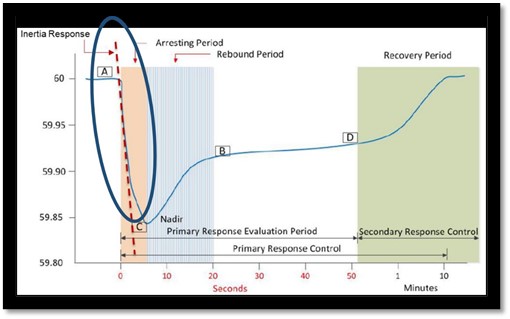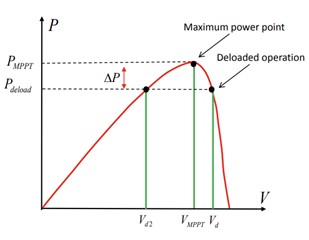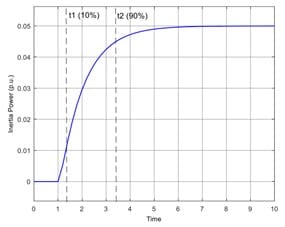
James O’Brien
The global supply of renewables is expected to grow by 35 gigawatts from 2021 to 2022, falling short of global power demand, anticipated to increase up by 100 gigawatts during this period. In North America, this penetration of asynchronous renewable energy sources (e.g., wind, photovoltaic) and energy storage systems (ESS) has created many technical challenges. One of these is the need to find a substitute for the displacement of the loss of inertia from synchronous generators. How do we maintain system stability during this major shift in the characteristics of the bulk electric power system?
Inertia and inertial response
Simply stated, inertia is the kinetic energy of the generator which opposes instantaneous changes in system frequency. Generation in the system can be lost for any number of reasons, such as a plant having a mechanical failure or an error in control settings. The instantaneous change in system generation results in an imbalance between generation and load which reduces system frequency, with the inertia impacting the rate of change of frequency (RoCoF). To examine the resulting RoCoF, we must consider the total system inertia (H sys), and the relative size of the generation loss (P gen – P load).

The issue is not just with the RoCoF, which determines the initial slope, but also with the nadir, defined as the lowest value that frequency reaches before recovering. This is important, as having a frequency that’s too low can place the system in a state from which it cannot recover, ultimately resulting in system blackouts.

Example of a typical post-event frequency response
The system inertial response is an extremely short phenomenon causing an instantaneous power injection from synchronous units, however, to recover the system frequency, there must be a sustained injection of generation power. There are generating units online which have the capability to increase their power output—known as Frequency Responsive Reserves (FRR)—and are set to automatically respond by changing the real power output with changes in system frequency. This is what is known as primary frequency response, which in combination with the initial RoCoF, works to arrest the decrease in frequency.
“Synthetic inertia” and Fast Frequency Response

Operating Point of de-loaded PV Generation [1]
While there are some instances of “synthetic inertia” created by extracting the energy in a moving wind turbine blade, most often they are referring to Fast Frequency Response (FFR). FFR is the near-instantaneous (defined as 2 seconds or less) injection of energy from any generation or storage source during a system event.

Fast Frequency Response Profile for PV Generation [2]
This response depends on the ability of an energy source to increase its power output, requiring that the ESS have a charge, and generation must be “de-loaded” by operating below the optimal condition at a reduced power output. The rate at which power can change is of critical importance, as it impacts the frequency nadir.
Enabling high levels of renewable generation at the system level
With the increased displacement of fossil fuel generation with renewables, the current method of operating the system is also becoming outdated. Modern technologies and capabilities are needed to enable faster renewable generation response and close the gap. Placing these de-loaded renewable energy plants on governor droop enables them to be included as FRR, which is needed to replace conventional generation in the BAL standards. Given all this, there is still one question to be resolved: who will pay for the decrease in the loss in revenue due to lost production of de-loading renewable generation plants?
At PSC, we help the energy industry adapt and thrive in today’s environment of growing demand for renewable resources. Contact us to find out more about how we can help with your next project.
[1] “Fast Frequency Response Capability of Photovoltaic Power Plants: The Necessity of New Grid Requirements and Definitions” Claudia Rahmann and Alfredo Castillo.
[2] “Photovoltaic (PV) Virtual Inertia and Fast Frequency Regulation in High PV Power Grids”, Shutang You.
